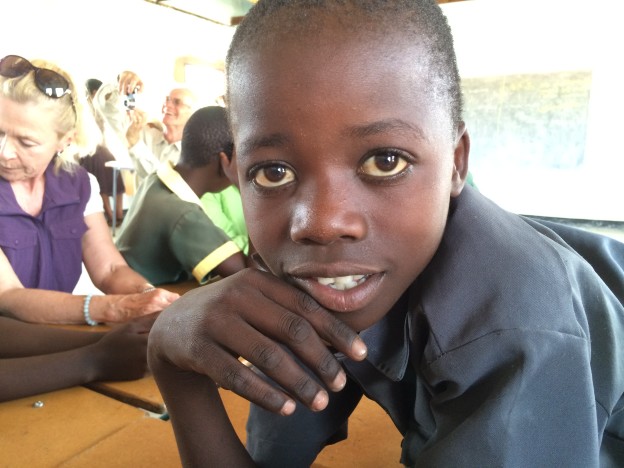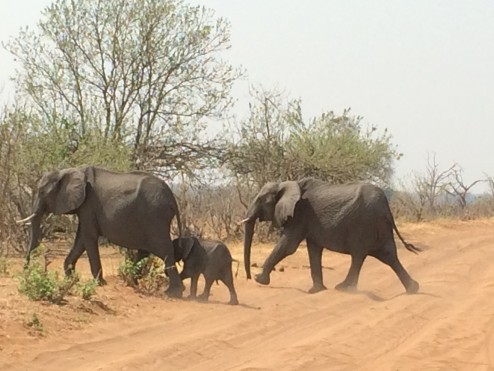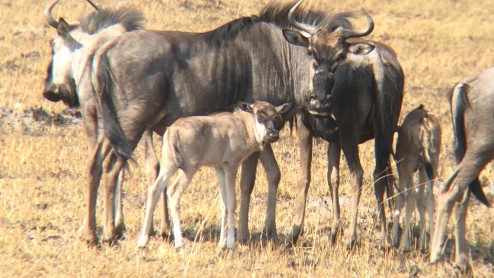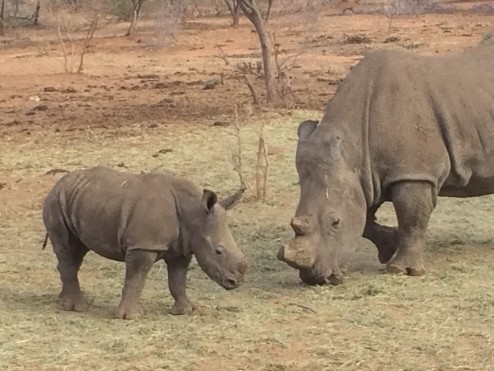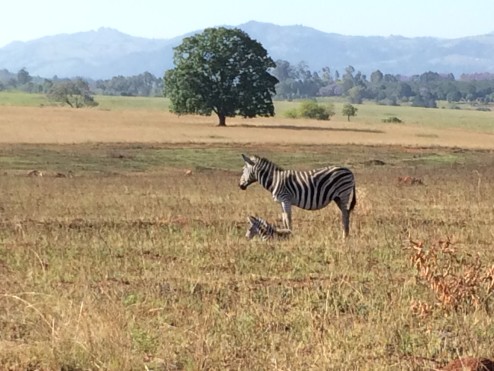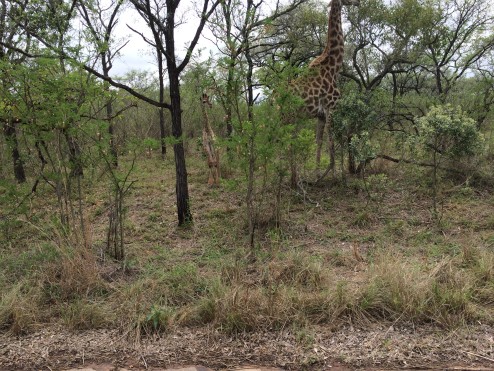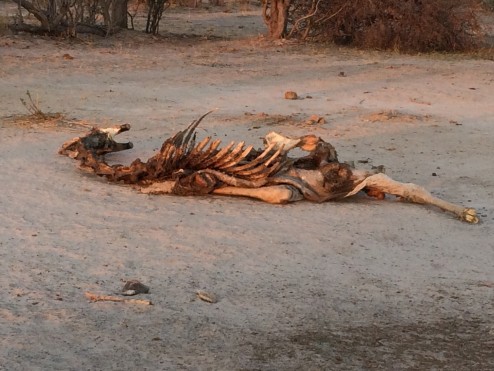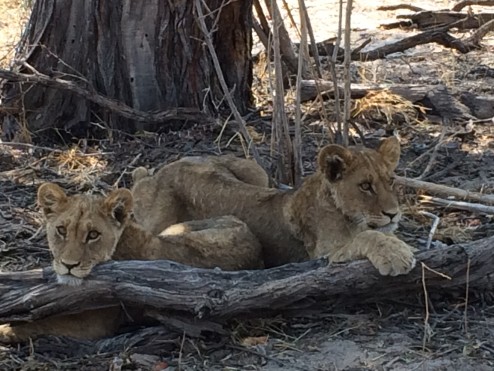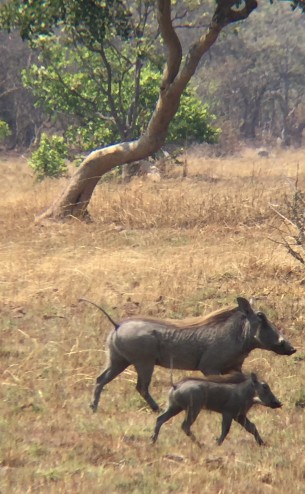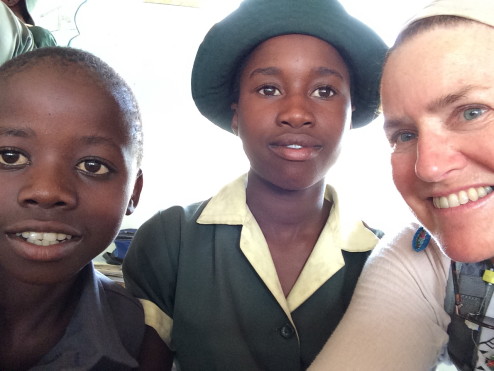Keeping the babies safe is most herds’ first priority. Our guides thought this baby elephant was about 2 months old.
The herds surround the baby, set a big male as a sentinel, and slow their pace to accomodate like the wildebeasts below..
They also push and shove to hurry them along as needed. Animal babies, like infants, get distracted by lots of things that are routine to adults, but these babies, separated from the herd become vulnerable to hungry predators in well rehearsed hunting packs. Sometimes, like rhinos, they have a mom so tough, fast, and mean that they can stay near but not be surrounded by a herd. Unfortunately, the biggest rhino predators are poachers that will kill the rhino mother for the stub of horn left by other poachers (see below, near Kruger NP) , with no regard for the baby’s survival. Poachers are shot and killed on site in most parks in Africa. Vehicles are searched and heads counted upon entry and exit from the Parks to ensure no one is “dropped off” with a weapon, deep in the park for some furtive night time poaching activity.
Animals in reserves with no predators can rest and relax without stress (Swaziland).
Two sets of babies had stories that caught our attention. One was a newborn giraffe calf in Kruger NP that was limping and weak. You can barely find him camoflaged as a tree trunk (below). Giraffes fall 8 feet to the ground at birth while still protected inside the placental sac. The severe drop and shock make them begin to use their lungs. Our guides were of differing opinions about this newborn calf’s ability to survive with an injury. One said this calf would be dead in days. The other said he might strengthen quickly enough to move with alacrity within days. Ah, the cycle of life. Earlier, in Chobe NP we came upon the skeleton of a full grown giraffe picked clean from a succession of cheetah, lion, hyena, and vulture, convincing us that this tiny baby is highly at risk.
The other babies that we observed were all by themselves in a far corner of the park. Because we ran into a lion researcher who studied their pride, we learned that the mothers had placed them in a corner of the park away from the pride and the recent elephant kill, to protect them from a marauding male lion that had already killed a cub back at the elephant kill site. They obeyed their mothers and just stayed put, waiting for an evening visit to the local water hole when their mothers returned.
My personal favorites were the warthogs. Even the babies’ tails stick straight up in the air when they begin to trot, due to a tendon that runs along their spine. That way they can stay together running at high speed through deep grass. Pretty smart; but they are pigs after all.
The other African babies we enjoyed were the schoolchildren we visited in Zimbabwe. They sang and danced for us, and we brought them soccer balls and school supplies. They loved our electronic devices, especially their pictures with us! Africa can only have a great future in the hands of these young and curious scholars. We need to keep them safe and thriving as part of ‘our herd’ with donations to great organizations like Grand Circle, and the Bill and Melinda Gates Foundation. These babies are our future too.

